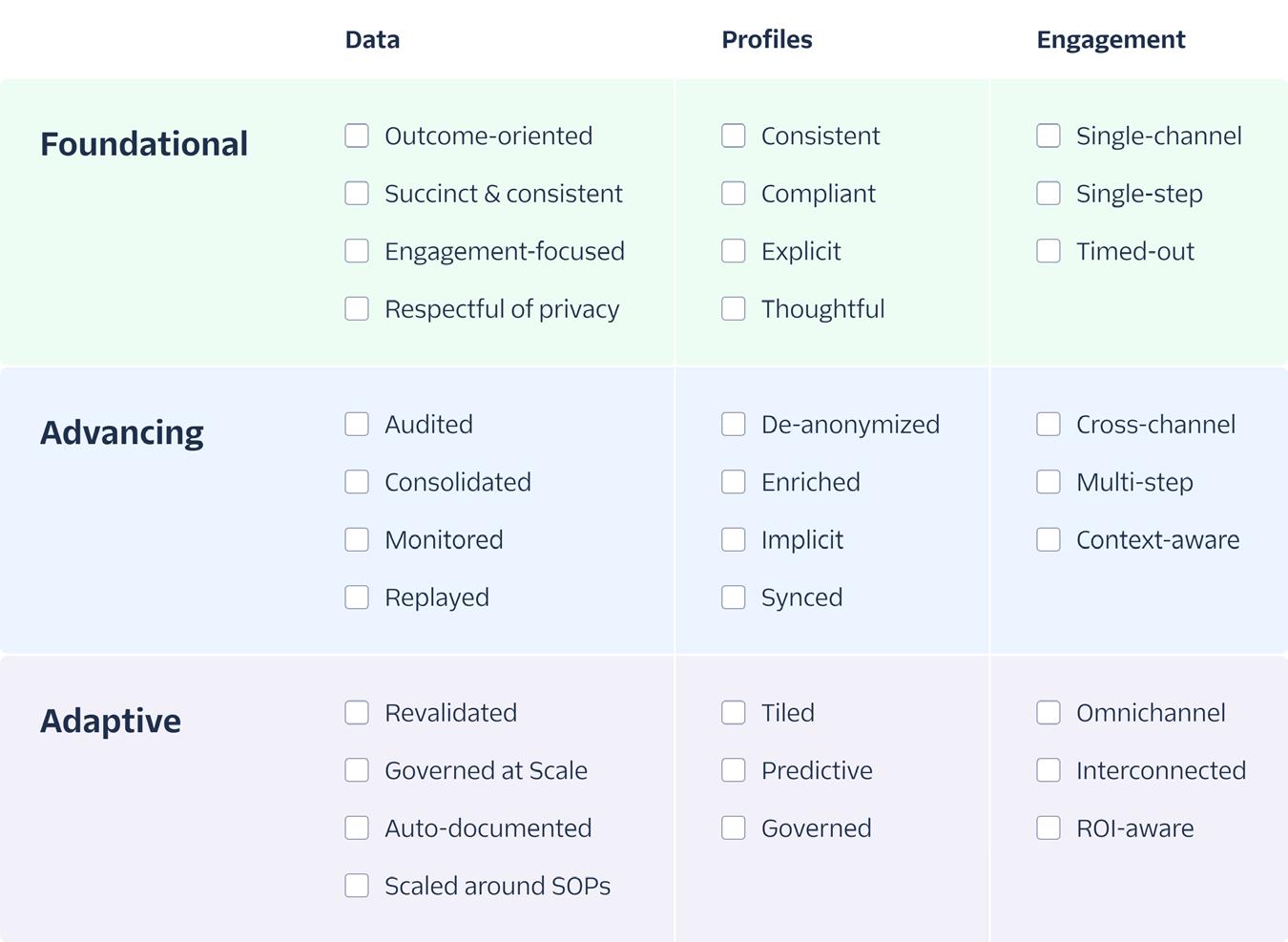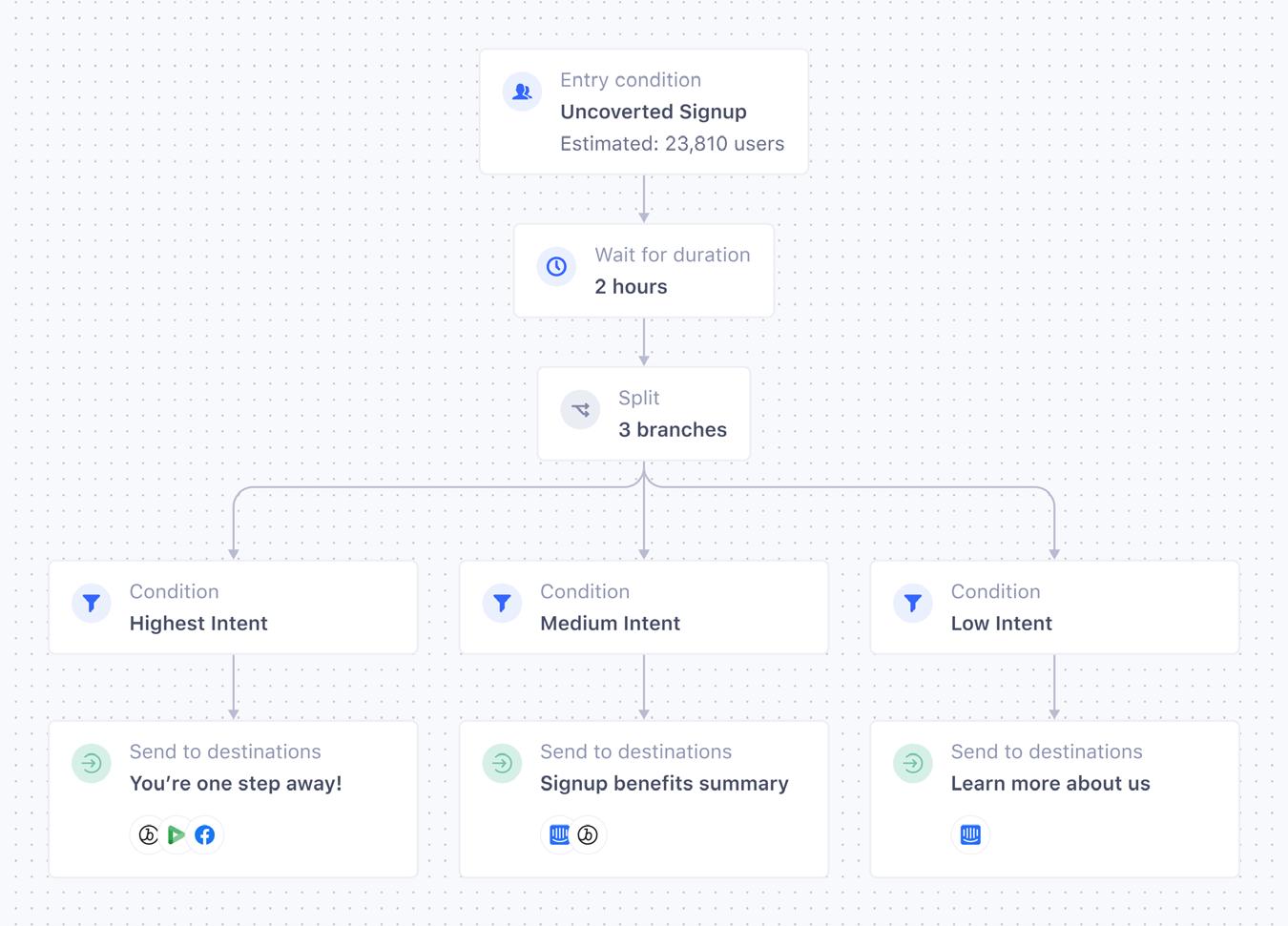
6 minute read
Additional Reading
For guidance on identifying your key goals or metrics, we suggest reading our Analytics Academy article on Choosing Metrics that Matter. At the end of that article, you’ll find additional links to content warning of the perils of Vanity Metrics.
Succinct data
Advertisement
Once you’ve identified outcome-oriented events to measure, you’ll need to define a Tracking Plan – which gives you a consistent roadmap for what data is important, where it’s being tracked, and why you’re tracking it.
When building out your initial Tracking Plan, start with a short list of events (anchored on outcomes) and don’t put pressure on yourself to measure every single data point off the bat; focus on getting the basics right!
You’ll speed your time to value and create an iterative, repeatable measurement approach for your team. Remember: less is more! And oftentimes, just measuring the basics can drive very tangible value.
Let’s explore an example of being succinct with your measurement. If one of your business goals is to increase new user activation, you’ll likely want to measure the completion rate of your new user onboarding flow – and investigate any “falloff points” within that flow.
Let’s say the flow is eight steps long. The first thing to consider is how you’ll name the events at each step. Rather than naming each event uniquely (e.g. Onboarding Funnel Step 1 Completed , Onboarding Funnel Step 2 Completed ), consider naming a more generic event called Funnel Step Completed with funnel_name , step_number , step_name , and total steps as properties of the event. This approach cuts down on unique event names while making your funnel easier to quickly explore in analytical tools and activate in audiences.
Here’s another way to be succinct in this same example: there’s no need to measure all eight steps during your initial implementation! All you need to start is the first, 4th and 8th steps – which will give you enough data to understand basic completion and falloff rates. This concept is called a “low-resolution funnel”, and it relieves pressure from your implementation team while driving faster time to insight. Once you’ve started gathering the low-resolution data, you can always add more interim funnel step measurement to your Tracking Plan and increase the “resolution” of the funnel to investigate additional hypotheses.
Consistent data
As you write your (succinct) Tracking Plan, you’ll also want to pay careful attention to how events are named – and ensure your naming conventions are consistent.
Before any API calls are sent into Segment, your CDP stakeholders should collectively align on an event naming framework that is easy to understand and ensures consistency across the board.
Segment prefers the “Noun Verb” syntax, which results in events like Product Added and Order Completed that automatically map to our downstream integrations like Google Analytics Enhanced Ecommerce. But even if you don’t go with Noun Verb syntax, what’s most important is that your naming convention is consistent across channels like web, mobile, and server. Equally important is that you’ve chosen a sufficiently abstract naming convention so it’ll scale across business units.
Cross-channel analysis becomes so much easier when the same events have the same name regardless of what channel or tool you’re using. Event naming conventions also promote organizational alignment: everyone, regardless of department, can easily understand the meaning of each event being tracked. When everyone is on board, this bolsters the longevity of your data framework as a whole.
Customer Insight
Industry: B2B SaaS & Technology
IBM, one of the most iconic technology companies in the world, provides a suite of data and AI tools to help enterprises on their journey to the cloud. IBM Cloud is purpose-built with a full stack of IaaS, PaaS, SaaS, data, AI, and blockchain capabilities in support of enterprise cloud applications and AI workloads, leveraging IBM’s deep domain and industry expertise.
Developing a schema that every team can use is tricky for large enterprises like IBM. After all, each product has a different function, different target persona, and different customer journeys. To get started, IBM asked its teams to identify the most important user actions that led to increased product adoption, which they referred to as “milestone” events.
IBM knew they had to strike the right balance between being general enough that data tracking could work for every team, and specific enough to differentiate between platforms – no simple task. To pull this off, IBM focused on making their product events high level (e.g. “product_login”, “product_signout”), and then used properties to provide important context (e.g. “account_type”).
To do all this, IBM used Segment Protocols to create tracking plans and guide relevant data from the right source to the right destinations. With Protocols, any event that didn’t fit within their predetermined schema would be automatically blocked to ensure accuracy.

Engagement-focused data
How do you track whether the users who move throughout your site are actually engaged with your products or content, even if they don’t click anything? Your temptation might be to use Segment’s page or screen call as a proxy for engagement. But this typically creates a false positive. Just because someone landed on a specific page, it doesn’t necessarily mean they’re engaged with the content on that page!
Segment customers solve this problem using something called “scroll depth” or “video depth” tracking. Here’s an open-source repo with some sample code. It works by first measuring the height of the page (or the length of the video) when the user lands on it, and then establishes break points at regular intervals of the page length or video (25%, 50%, 75%, 100%, for example).
As the user scrolls (or watches) past each of these breakpoints, Segment can fire off an event called Pct Page Scrolled (or Pct Video Viewed ) with a property equal to the percentage depth that they've scrolled (or viewed).
This gives you valuable insights into how well specific pieces of content engage your visitors, as well as what your visitors are legitimately interested in. This second insight will prove especially powerful when we build “inferred preferences” as part of Advancing profiles, and so putting scroll/video depth tracking in place early on helps establish a truly foundational set of data we can “advance” upon in later phases of the maturity model.
Data respectful of privacy
As data privacy regulations grow increasingly complex across markets, you need to be proactive in developing a consent strategy that aligns with your company’s interpretation of the law governing the capture and leverage of first-party data. It’s called “first-party” because it comes directly from your customers. In contrast, third-party data is purchased from user data aggregators, who often collect data with questionable consent and share that data across different business entities without explicit permission from the end user.
At the core of this consent strategy is “wrapping” Segment’s tracking libraries with a consent management tool which asks users whether and how you can track and leverage their data. That same tool then stamps those preferences on each event sent into Segment so those preferences can be respected as data flows downstream. Segment offers its own open-source consent management tool you can deploy on your website, and also integrates with other tools such as OneTrust and TrustArc.
It can be complex to implement this consent “wrapper” around Segment, but this work is foundational to both respecting user privacy and complying with laws and policies related to that privacy. When implemented properly, the consent wrapper achieves two things: it sets your customer's expectations around the ways their data will be used by your engagement teams, and it also establishes flags on that customer’s profile in your CDP so you can respect their privacy preferences when sending data downstream.
While these wrappers help you lay the foundation for compliance with privacy laws, they do not automatically ensure compliance!
You must combine the consent preferences you’ve captured with your own vigorous privacy and compliance policies to account for how those preferences will be honored in all aspects of your data leverage – from computation and audience-building to analytics and prediction. To accelerate that process, consider appointing a Data Privacy Officer to shape and enforce your data privacy policies.
Choosing to prioritize the capture of first-party consent at the start of your CDP implementation is hard work, but it also yields a number of benefits. It helps establish trust with the people whose behavior you’re measuring. It lays a solid foundation for compliance with complex laws and policies to mitigate the risk of fines and reputational damage. And it helps you ensure you’re only engaging with people who actually want to be marketed to – which ends up improving return on ad spend and conversion rates.
Additional Reading
For suggestions on how to create a privacy strategy that respects user preferences, this blog on First-Party Data: How to Activate & Leverage Your Data outlines considerations when collecting and activating first-party data. To learn how to automate deletion requests, we recommend reading Streamline Compliance with Segment’s End-User Privacy Tools.





